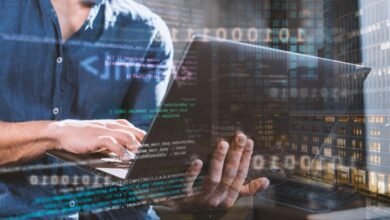Inside the Metaverse: The Rise of Virtual Economies and Digital Assets in 2023

Virtual Economies and Digital Assets
As technology continues to evolve, the idea of a fully immersive virtual world has become more and more feasible. The Metaverse, a term first coined by sci-fi author Neal Stephenson in his novel Snow Crash, describes a hypothetical future version of the internet, where individuals can interact with each other in a shared virtual space. The potential uses for the Metaverse are vast and varied, ranging from entertainment to education, but one area that has seen significant growth is virtual economies and digital assets.
What is the Metaverse?
Virtual economies are essentially economies that exist within a virtual world. Players can earn and spend virtual currency on various goods and services, just like in the real world. One of the most well-known examples of a virtual economy is in the massively multiplayer online game World of Warcraft, where players can earn gold through completing quests and selling items to other players. This gold can then be spent on in-game items, such as weapons, armor, and mounts. In fact, the virtual economy in World of Warcraft is so complex that there are even players who make a living selling virtual items for real money.
Virtual Economies in Video Games
But virtual economies are not limited to just video games. In recent years, virtual economies have begun to pop up in virtual worlds such as Second Life, Decentraland, and The Sandbox. In these virtual worlds, users can buy and sell virtual real estate, create and sell virtual goods, and even earn real money through various virtual jobs.
Virtual Economies in Virtual Worlds
Digital assets, or non-fungible tokens (NFTs), are another growing trend in the world of virtual economies. NFTs are unique digital assets that are verified using blockchain technology. This verification process ensures that each NFT is one-of-a-kind and cannot be replicated. NFTs can take many forms, including digital art, music, videos, and even tweets. In March 2021, an NFT artwork by the artist Beeple sold for $69 million at a Christie’s auction.
Virtual Real Estate
As virtual economies and digital assets continue to grow in popularity, the implications for traditional economies are significant. In the future, it’s possible that virtual economies could become just as important as real-world economies, and virtual currencies could become just as valuable as real-world currencies. Additionally, the rise of NFTs could change the way we think about ownership and intellectual property.
Virtual Goods
However, there are also concerns about the potential negative effects of virtual economies. For example, some worry that virtual economies could encourage addictive behaviors or that they could be used for illegal activities such as money laundering. There are also questions about the sustainability of virtual worlds and whether they can continue to grow and evolve over time.
Virtual Jobs
Despite these concerns, the rise of virtual economies and digital assets is a fascinating trend to watch. As the Metaverse becomes more and more of a reality, it’s clear that virtual economies and digital assets will play a significant role in shaping the future of the internet and the world as a whole.
Read More:The Metaverse Chronicles: Unveiling the New Frontier of Technology and Society in 2023
Conclusion
The rise of virtual economies and digital assets is an exciting trend that has the potential to change the way we think about money, ownership, and intellectual property. As technology continues to evolve and the Metaverse becomes more of a reality, it’s clear that virtual economies will become more important and influential. However, there are also concerns about the potential negative effects of virtual economies, and it’s important to carefully consider the implications of this trend as it continues to grow and evolve.
Blockchain technology is a decentralized ledger system that allows for the creation of secure, transparent, and immutable records. In the world of virtual economies, blockchain technology can be used to verify ownership of digital assets, ensure that they are unique, and prevent fraud or counterfeit. This is particularly important for NFTs, which rely on the verification of ownership and authenticity to maintain their value.
Another key factor to consider is the potential for virtual economies to become a significant part of traditional economies. As virtual currencies and assets become more valuable and widely used, it’s possible that they could have an impact on the global economy. For example, some countries have already begun to explore the idea of creating their own virtual currencies.
However, there are also concerns about the potential negative effects of virtual economies, particularly in terms of addictive behaviors and the potential for illegal activities. It’s important to carefully consider these concerns and work to mitigate any negative effects as virtual economies continue to grow and evolve.
Ultimately, the rise of virtual economies and digital assets is a fascinating trend that has the potential to transform the way we think about money, ownership, and value. As technology continues to evolve and the Metaverse becomes more of a reality, it will be important to carefully consider the implications of this trend and work to ensure that it benefits society as a whole.











